


The arm pattern in Sb systems reach their maximum degree of disorder in galaxies of this luminosity class. Perhaps the most chaotic galaxy shown here is NGC 5055, classed Sbc rather than pure Sb. The fragmented filamentary arms cannot be traced, yet the general spiral pattern is clear albeit not coherent. The same comments apply to NGC 7217, which at first glance appears to have a highly regular arm pattern but which in fact again has only fragmented arms. Both NGC 7217 and NGC 5055 are late examples of NGC 2841 (Hubble Atlas, Sandage, 1961, p. 14) which is the type-example for the filamentary galaxy type. Many other examples of Sb galaxies with this form are given in the Hubble Atlas (pp. 14-18). The group also includes NGC 4800, shown here in the lower right from a W60 plate.
The absolute luminosities of the illustrated SbII-III galaxies show a wider range than in the previous three Sb panels, going from -22m.38 for NGC 7769 to -19m.32 for NGC 4800. Despite this 3-mag difference, the appearance of these galaxies does not progressively change from the upper left to the lower right. Once again we take this to mean that luminosity is not the primary factor that determines the luminosity class of a given galaxy.
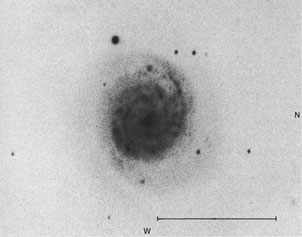
NGC 7769 P200-7545-S Sbc(s)II-III -22m.38 4349 km/s | 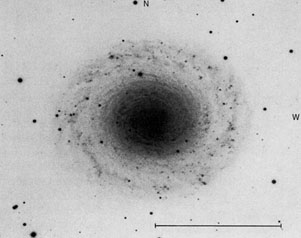
NGC 7217 P200-63-H Sb(r)II-III -21m.66 948 km/s |
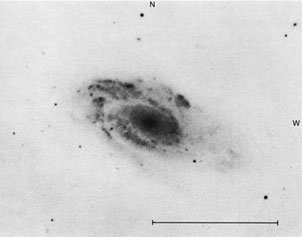
NGC 7205 C100-451-Rose Sb(r)II.8 -21m.48 1482 km/s | 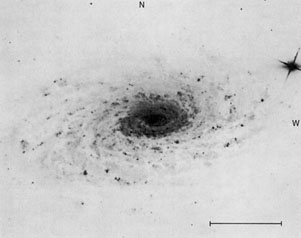
NGC 5055 W100-93 Sbc(s)II-III -21m.34 503 km/s |
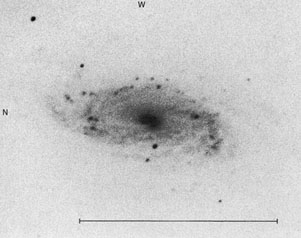
NGC 5806 W100-2266-H Sb(s)II.8 -20m.23 1352 km/s | 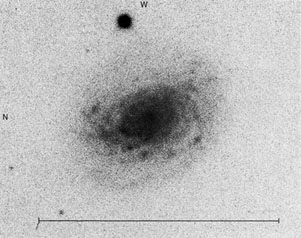
NGC 4800 W60-1807-H Sb(rs)II-III -19m.32 746 km/s |